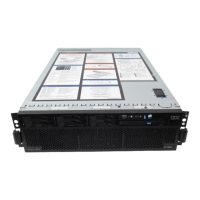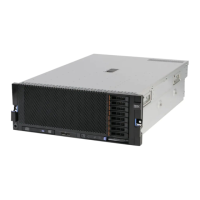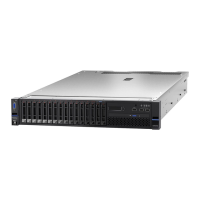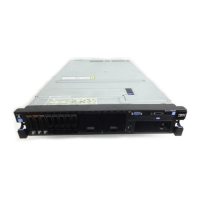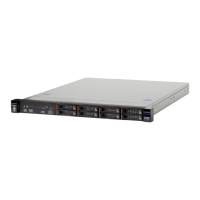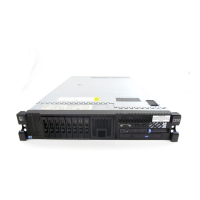316 IBM eX5 Implementation Guide
7.5 PCIe adapters and riser card options
This section describes considerations for determining how to use your PCIe slots, depending
on the types of PCIe riser cards that you have installed. The x3690 X5 is designed to function
in a wide variety of tasks, starting from a high-performance graphics workstation up to a
storage or processing node in a high-performance cluster.
7.5.1 Generation 2 and Generation 1 PCIe adapters
All of the PCIe slots in the x3690 X5 are at the Generation 2 (Gen2) specification. Gen2 offers
additional error correction and addressing advancements, so that all of the slots of this server
exchange data twice as fast as servers with Gen 1 PCIe slots.
Table 7-3 describes the theoretical limits of each of the common types of PCIe adapters.
Remember that theoretical limits are based on the mathematics of the frequency and data
width of the bits that are transmitted over the interface. Theoretical limits do not take into
account the communications needed to maintain the protocols required to interface between
intelligent devices. Theoretical limits also do not take into account the inability to maintain a
steady flow of data in full duplex.
Table 7-3 Theoretical data transfer limits of Gen1 PCIe slot types versus Gen2 PCIe slot types
PCIe adapters connect to the processors via the I/O hub. The purpose of the I/O hub is to
combine the various data streams from each of the PCIe slots into a single aggregate link to
the processors by using a dedicated QPI link to each processor. The data transfer rate of the
QPI link is negotiated between the processor and the I/O hub.
Table 4-5 on page 130 shows the QPI link speeds based on the types of installed processors.
The I/O hub supports the highest QPI link speed on the table, which is 6.4 gigatransfers per
second (GT/s). You can adjust the QPI link speed to conserve power by booting into
F1-Setup, then selecting System Settings Operating Modes, and setting QPI Link
Frequency to values other than the default
Max Performance, as shown in Figure 7-14 on
page 317.
PCIe slot type Generation 1 limit Generation 2 limit
x1 500 MBps 1 GBps
x4 2 GBps 4 GBps
x8 4 GBs 8 GBps
x16 8 GBps 16 GBps
x32 16 GBps 32 GBps
